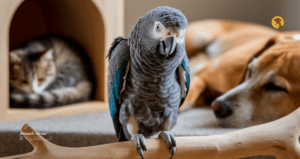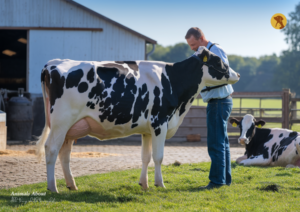The English Labrador Retriever is one of the world’s most beloved and popular dog breeds. Known for their friendly temperament, intelligence, and loyalty, English Labs make excellent family pets, working dogs, and companions. This guide explores everything you need to know about the English Labrador Retriever, including its characteristics, care needs, and why it might be the perfect pet for you.
Breed Overview
| Breed Name: English Labrador Retriever Origin: United Kingdom Breed Group: Sporting Group Size: Medium to Large Height: Males: 22-24 inches; Females: 21-23 inches Weight: Males: 65-80 lbs; Females: 55-70 lbs Lifespan: 10-14 years Coat Type: Short, dense, water-resistant Colors: Black, Yellow, Chocolate Temperament: Friendly, Loyal, Intelligent, Gentle Energy Level: Moderate to High Trainability: Highly trainable, responds well to positive reinforcement Best For: Families, singles, active individuals, therapy work, service dogs |
What Is an English Labrador Retriever?
The English Labrador Retriever is a specific variation of the Labrador Retriever breed, distinct from the American Labrador. English Labs are bred primarily for companionship and conformation shows, whereas American Labs are often bred for fieldwork and hunting.
Key Differences Between English and American Labradors
- Build: English Labs have a stockier, more muscular build with a broader head and thicker neck.
- Temperament: English Labs tend to be calmer, making them great for families and therapy work.
- Energy Level: They have a more relaxed demeanor compared to the high-energy American Labs.
English Labrador Retriever Characteristics
Appearance
- Size: Males: 22-24 inches tall, 65-80 lbs; Females: 21-23 inches tall, 55-70 lbs.
- Coat: Short, dense, and water-resistant.
- Colors: Black, Yellow, and Chocolate.
- Eyes: Expressive and friendly.
Temperament
- Friendly & Affectionate: English Labs are incredibly social and love human interaction.
- Intelligent & Trainable: They excel in obedience and agility training.
- Gentle & Loyal: They are wonderful with children and other pets.
Lifespan & Health
- Average Lifespan: 10-14 years.
- Common Health Issues: Hip dysplasia, elbow dysplasia, obesity, and ear infections.
How to Care for an English Labrador Retriever
1. Diet & Nutrition
- Provide high-quality dog food rich in protein and healthy fats.
- Avoid overfeeding to prevent obesity.
- Fresh water should always be available.
2. Exercise & Training
- Requires at least 60 minutes of daily exercise.
- Enjoys walks, swimming, and playtime.
- Positive reinforcement works best for training.
3. Grooming Needs
- Brush coat 2-3 times per week.
- Bathe as needed (once a month or when dirty).
- Regularly clean ears to prevent infections.
4. Health & Vet Care
- Schedule routine check-ups with a veterinarian.
- Keep vaccinations and parasite control up to date.
- Watch for signs of joint issues or weight gain.
Why Choose an English Labrador Retriever?
The English Labrador Retriever is an ideal choice for families, singles, and seniors due to its friendly nature and adaptability. Whether you are looking for a loyal companion, a service dog, or a show dog, an English Lab can be a perfect fit.
Is an English Lab Right for You?
- If you’re looking for a loving and friendly pet, an English Labrador is a great choice.
- Daily exercise and training are essential to keep them happy and healthy.
- Regular grooming and vet care will ensure their well-being.
Training Your English Labrador Retriever
English Labradors are highly trainable due to their intelligence and eagerness to please. Start training at an early age to establish good behavior patterns.
Basic Training Tips
- House Training: Use crate training and establish a routine.
- Socialization: Expose your Lab to different people, pets, and environments.
- Obedience Training: Teach basic commands like sit, stay, and come.
- Leash Training: Use positive reinforcement to encourage proper walking behavior.
Advanced Training
- Agility Training: English Labs excel in agility courses.
- Service Training: Many Labs serve as therapy or assistance dogs.
- Hunting & Retrieval Training: They have natural instincts for retrieving.
Common Behavioral Traits & How to Manage Them
Separation Anxiety
English Labs are people-oriented dogs and may experience anxiety when left alone for long periods. To prevent destructive behavior:
- Provide interactive toys.
- Gradually increase the time they spend alone.
- Consider a dog walker or pet sitter if you’re away for extended hours.
Chewing & Biting
Labs are known for their love of chewing. Provide durable chew toys and discourage biting behaviors by redirecting their attention.
Jumping on People
While Labs are affectionate, jumping on people can be a problem. Train them to sit when greeting people instead.
English Labrador Retriever in Different Roles
1. Family Pets
English Labs are excellent family pets due to their gentle nature and affectionate temperament. They are great with children and get along well with other pets.
2. Service & Therapy Dogs
Their intelligence and trainability make them ideal for service roles, including:
- Guide dogs for the visually impaired.
- Emotional support animals.
- Therapy dogs for hospitals and nursing homes.
3. Hunting & Sporting Dogs
Though they are calmer than American Labs, English Labs still retain strong retrieving instincts and excel in hunting and sporting activities.
FAQs About English Labrador Retrievers
Yes! English Labs are affectionate, gentle, and great with kids.
At least 60 minutes of exercise per day.
Yes! They are highly intelligent and respond well to training.
Yes, they shed moderately year-round and more heavily during seasonal changes.
They prefer company but can be left alone for short periods with proper training.
The English Labrador Retriever is a fantastic breed for dog lovers of all kinds. Whether you’re looking for a loyal pet, a playful companion, or a dedicated working dog, the English Lab is a top choice. If you’re considering bringing one into your home, make sure you’re ready to provide the love and care they deserve!







